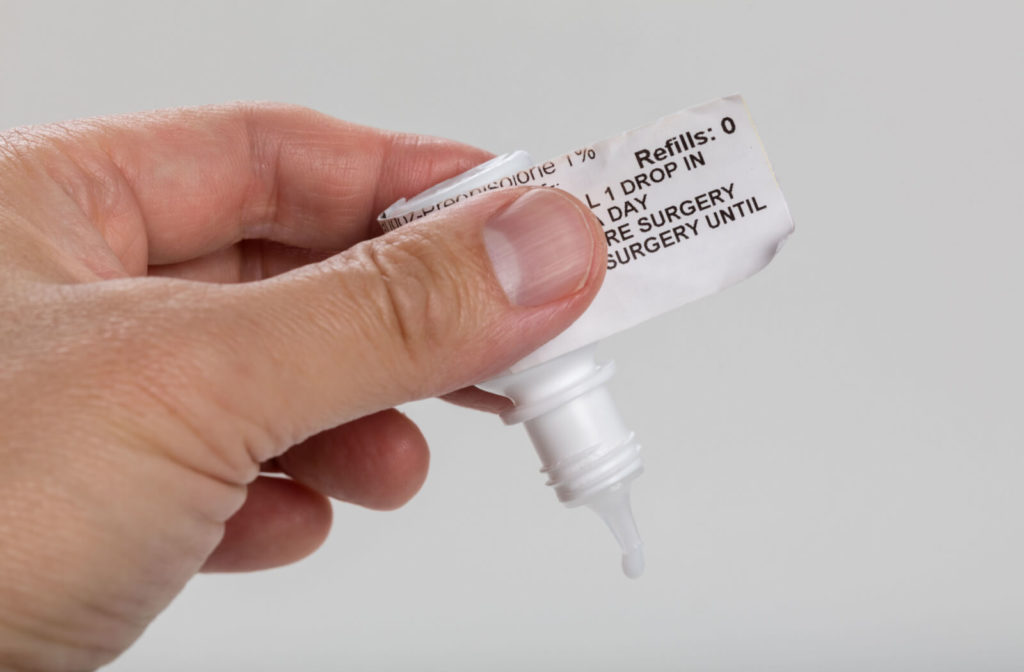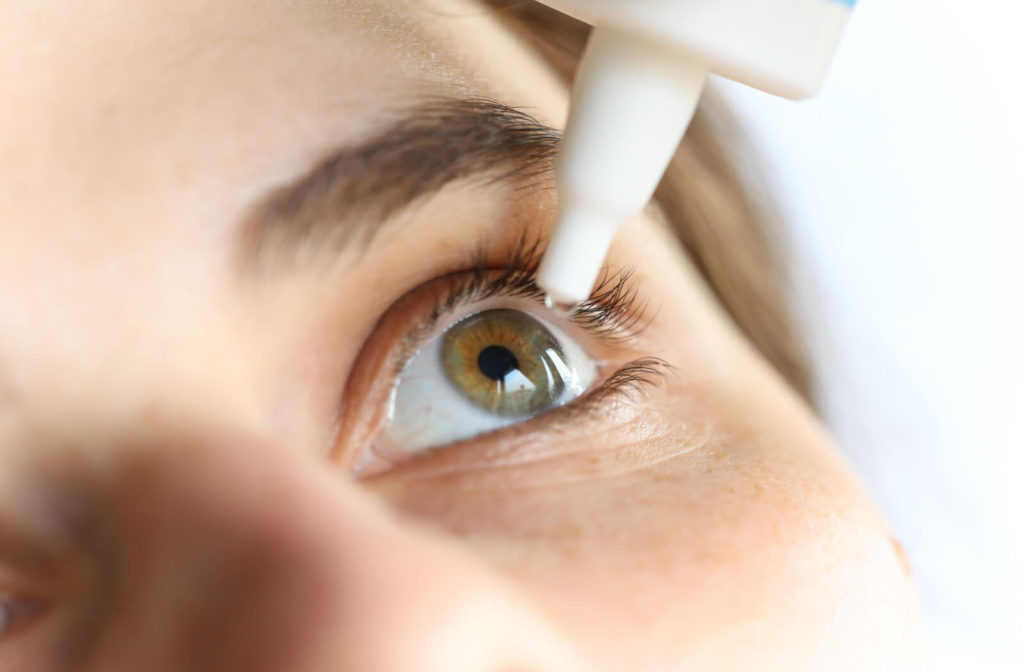Eye drops can be an excellent treatment option for people looking to relieve mild eye discomfort. They can be used to help with common conditions like allergies, bacterial infections, dry eye disease, and even glaucoma.
With that in mind, it’s important not to overuse your eye drops and to follow the instructions provided on the bottle and by your eye doctor. Overusing your eye drops can lead to more serious conditions or issues.
If you want to learn more about eye drops and how they can help, book an appointment with Dr. Henslick Vision Center and speak with one of our friendly staff.
Why You Shouldn’t Overuse Eye Drops
There is such a thing as overusing eye drops, whether prescription or preservative-free. Below are a few reasons why you should be careful not to use your eye drops more than instructed on the bottle or by your eye doctor.
Masking a More Serious Issue
Red, dry, and irritated eyes often indicate that something could be wrong with your eyes and that you may need medical attention. Overusing eye drops can mask these signs and prevent you from seeking medical advice. Some potential issues it could mask include:
Washing Away Natural Tears
Overusing eye drops could play a role in washing away the natural moisturizers and tears needed to help lubricate your eyes.
May Cause Irritation
Eye drops can cause discomfort if you have sensitive eyes. For example, prescription eye drops or drops with preservatives are more likely to cause some irritation than the preservative-free options. We recommend discussing with your optometrist which version would be best for your eyes.
How Often Can You Use Eye Drops?
Many eye drops with preservatives can be used up to 4 times daily. Other preservative-free eye drops can be used more frequently. It’s advised that you follow any instructions on the bottle or provided by your doctor.
What Are Eye Drops?
Eye drops typically use saline and other ingredients to help lubricate eyes and combat various vision conditions. Some eye drops are medicinal and used to combat issues like pink eye or glaucoma, and others can be purchased over the counter to help with allergies or dry eye. Common uses for eye drops include treating a variety of conditions and supporting everyday eye comfort.
Cataract Surgery
Many surgical treatments, like cataracts, may use eye drops to help prevent infection during the procedure. They can be used to help dilate your pupils and numb the area before the surgery begins.
Contact Lens Rewetting
If you wear contact lenses, you may have experienced dryness in your eyes from daily use. Some eye drops can be used to help rewet the contact lenses and provide some relief when wearing.
Infection
A doctor can prescribe antibacterial eye drops to help combat various issues and infections that affect the eyes.
Dry Eye
Dry eye is common and happens when your eyes are not producing enough tears or tears of a low quality. Eye drops can help replace natural tears and keep your eyes lubricated, relieving discomfort.
Allergies
Allergies can cause redness, stinging, or burning in your eyes. Certain eye drops can be used to reduce swelling, redness, and general discomfort. Some allergy eye drops will contain medication to help with symptoms.
Glaucoma
Glaucoma is an incurable condition that can lead to blindness or vision loss. It can cause fluid buildup in your eye, increasing pressure and leading to more serious complications. While glaucoma cannot be reversed, treatment can help control symptoms. Your doctor may advise you to use eye drops as a treatment method to help reduce some of the fluid buildup.

How to Use Eye Drops
Administering eye drops may not always be comfortable, but it can be made easier with a few simple steps:
- Gently tilt your head back and look up.
- Use one hand to pull your eyelid down and away from your eyeball to allow for the eye drops to get in.
- Use your other hand to gently squeeze the bottle and allow for the prescribed number of drops to enter your eye.
- Close your eye to stop the fluid from leaking out.
Tips for Using Eye Drops
Here are some helpful tips to keep in mind when you are using eye drops:
- Shake the bottle if outlined in the instructions
- Don’t let the tip of the eye drop bottle touch your eye
- Wash your hands thoroughly before putting them near your eyes
- Avoid sharing your eye drops with other people
- Remove your contacts before applying eye drops unless told otherwise
- If you’re using multiple types of eye drops, keep in mind the correct order to administer them
- Visit your eye doctor regularly
Book an Appointment Today
Eye drops can be a great tool for treating mild discomfort to more serious conditions, but it’s important to know the limits of your eye drops and to use them in moderation. If you’re experiencing eye discomfort, book an appointment with Dr. Henslick Vision Center. Our friendly and experienced team can help determine the cause, recommend the correct treatment, and offer advice on using eye drops safely and effectively.



